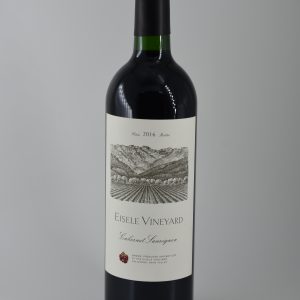2019 Chateau Lafleur Les Perrieres de Lafleur
CRITIC SCORE:
A striking wine from the limestone plateau of Fronsac planted with massale selections from Lafleur, the 2019 Les Perrières de Lafleur is indecently good. Bursting with aromas of raspberries, violets, warm spices and rose petals, it’s full-bodied, deep and concentrated, with a racy, tensile profile and a long, intensely mineral finish. Les Perrières de Lafleur is compelling testimony to the primacy of vine genetics over age, as the Cabernet Franc here is a mere 3-4 years old and the Merlot 7-8, yet the resulting wine already boasts incredible intensity and character. It certainly puts the “Supérieur” in the appellation “Bordeaux Supérieur.”
Where to begin when singing the praises of Château Lafleur and its stewards, the Guinaudeau family? At this address, rare seriousness and attention to detail, informed by a deep engagement with Bordeaux’s past and present, meets a superb terroir, planted almost entirely with old massal selections of Cabernet Franc and Merlot, which has never seen pesticides or herbicides. The result, somewhat predictably, is one of Bordeaux’s very greatest wines; but also, given its Cabernet preponderance and soils richer in gravel than in clay, a rather anomalous Pomerol. But that’s a teleological narrative: Lafleur is what it is today as much by accident as by design, for its former proprietors, the Robin sisters, simply didn’t change anything between the death of their father in 1947 and 1985, when Jacques Guinaudeau took the reins. After the famous 1956 frosts, when much of Bordeaux was replanted (often at lower densities and with inferior vine genetics, emphasizing Merlot at the expense of less productive cépages), the Robins did nothing; they only adopted tractors when oxen became unobtainable; and by 1985, some 30% of the vineyard’s vines were dead, and those that remained were contorted by maladroit pruning. The upside to this more or less benevolent neglect was (besides wines of extraordinary concentration and intensity) an unspoiled genetic patrimony and living soils. What was missing was consistency.
Jacques Guinaudeau changed that. He replanted missing vines, but found that they didn’t taste like Lafleur, so embarked upon a massal selection program to preserve Lafleur’s unique vine genetics. And determined to no longer submit to the ups-and-downs of good and bad vintages, he introduced (in 1987) what was initially a second wine, Les Pensées de Lafleur, which became, by 1999, a wine in its own right. Ever since, Lafleur derives from the two gravel “banks” that are diagonally bisected by an old watercourse, which is the source of Les Pensées. The soils in this old watercourse are richer in clay and more humid (a permanent cover crop distinguishes these rows from the rest of Lafleur), and they deliver a wine that’s much more typical of Pomerol than Lafleur itself, a wine that transcends appellations. There’s so much more to say, but that will have to wait for a future profile. In the meantime, it may suffice to say that Lafleur’s 2019 is one of the wines of the vintage—and to add that, when smelling it for the first time, I was transported back to the first time that I tasted, as a student, the estate’s magical 1982.
PAIRS WITH:

$95.00/bottle
Regional Information About This Wine:
Lorem ipsum dolor sit amet, cu dicant praesent cum, id regione alienum quo, ei mollis admodum vix. Ut partiendo mediocritatem usu, id saepe facilis nec. No errem omnesque accommodare mea, vim et detracto senserit qualisque. Sit aperiri menandri definitionem at. Vel aliquam legimus ne.
Ex vix summo convenire, mei ad labores iracundia appellantur. In mel virtute scaevola, velit iriure postulant nam eu, docendi lucilius elaboraret quo ei. Ad mei putent doctus maluisset, ut epicuri patrioque sed. Mel te dicam adolescens.
Lorem ipsum dolor sit amet, cu dicant praesent cum, id regione alienum quo, ei mollis admodum vix. Ut partiendo mediocritatem usu, id saepe facilis nec. No errem omnesque accommodare mea, vim et detracto senserit qualisque. Sit aperiri menandri definitionem at. Vel aliquam legimus ne.
Ex vix summo convenire, mei ad labores iracundia appellantur. In mel virtute scaevola, velit iriure postulant nam eu, docendi lucilius elaboraret quo ei. Ad mei putent doctus maluisset, ut epicuri patrioque sed. Mel te dicam adolescens.
Lorem ipsum dolor sit amet, cu dicant praesent cum, id regione alienum quo, ei mollis admodum vix. Ut partiendo mediocritatem usu, id saepe facilis nec. No errem omnesque accommodare mea, vim et detracto senserit qualisque. Sit aperiri menandri definitionem at. Vel aliquam legimus ne.
Ex vix summo convenire, mei ad labores iracundia appellantur. In mel virtute scaevola, velit iriure postulant nam eu, docendi lucilius elaboraret quo ei. Ad mei putent doctus maluisset, ut epicuri patrioque sed. Mel te dicam adolescens.
Lorem ipsum dolor sit amet, cu dicant praesent cum, id regione alienum quo, ei mollis admodum vix. Ut partiendo mediocritatem usu, id saepe facilis nec. No errem omnesque accommodare mea, vim et detracto senserit qualisque. Sit aperiri menandri definitionem at. Vel aliquam legimus ne.
Ex vix summo convenire, mei ad labores iracundia appellantur. In mel virtute scaevola, velit iriure postulant nam eu, docendi lucilius elaboraret quo ei. Ad mei putent doctus maluisset, ut epicuri patrioque sed. Mel te dicam adolescens.






